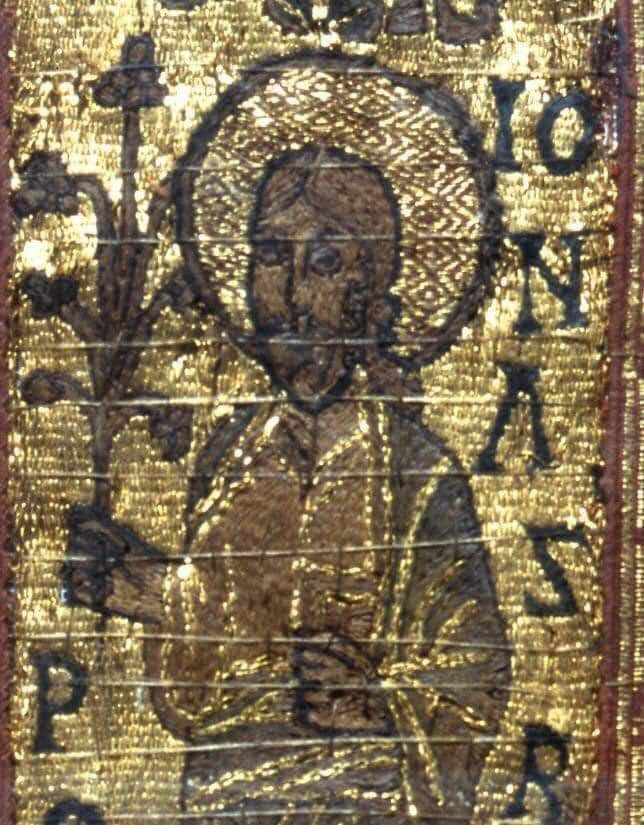Αναζήτηση αυτού του ιστολογίου
Κυριακή 29 Οκτωβρίου 2023
A close-up of one of the textiles offered by King Athelstan (924- 27 October 939) to the most important saint in northern England.
A close-up of one of the textiles offered by King Athelstan (924- 27 October 939) to the most important saint in northern England.
This was the 7th-century Cuthbert of Lindisfarne.
When King Athelstan came to pay homage, the saint’s relics were at Chester-le-Street where they stayed until about 995 - the traditional date for the hereditary guardians of St Cuthbert to settle permanently at Durham.
On a visit, probably in 934, King Athelstan offered a stole (a narrow band of cloth worn around the neck like a loose scarf) a maniple (the strip of cloth worn over the left arm by a priest celebrating the Eucharist, or Holy Communion) a girdle and wristbands. All are made of silk and gold thread.
The back of the two biggest garments carry the same two lines of text (in translation): ‘Ælfflaed ordered this to be made ... for the pious bishop Frithstan’.
The Ælfflaed in question was King Athelstan’s step-mother: the second wife of Edward the Elder, she was divorced in 919 or 920.
The other person mentioned, Frithstan, was Bishop of Winchester between 909 and 929 - and that helps to date the embroideries to 909-920.
It seems Athelstan took the precious textiles from a church favoured by his step-mother to give to the church of his own choice.
What’s remarkable is that these survived the 16th-century Reformation, unlike so many other priceless artefacts - and even more remarkably, they were still inside St Cuthbert’s coffin when it was opened in 1827.
https://trc-leiden.nl/trc-needles/individual-textiles-and-textile-types/religious-vestments-and-other-textiles/st-cuthbert-embroideries
For specific information on each item:
http://collections.durhamcathedral.co.uk/results
Εγγραφή σε:
Σχόλια ανάρτησης (Atom)










Δεν υπάρχουν σχόλια:
Δημοσίευση σχολίου